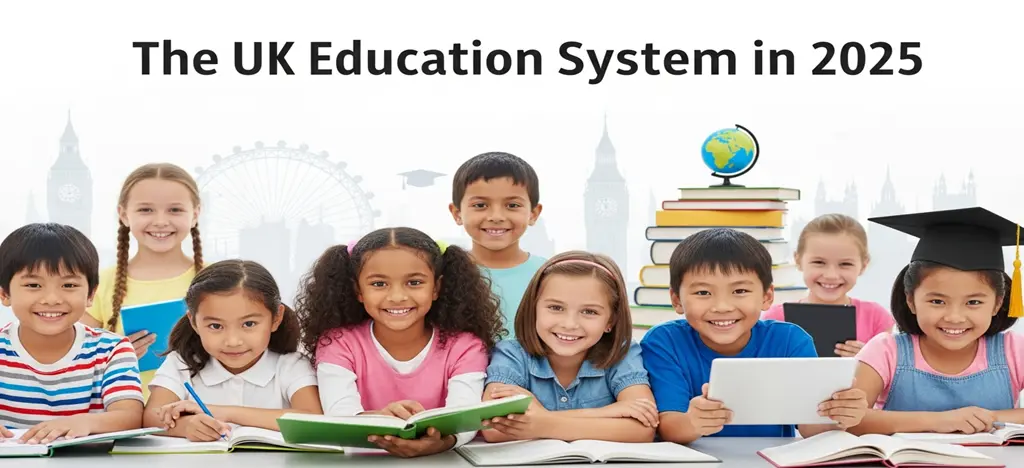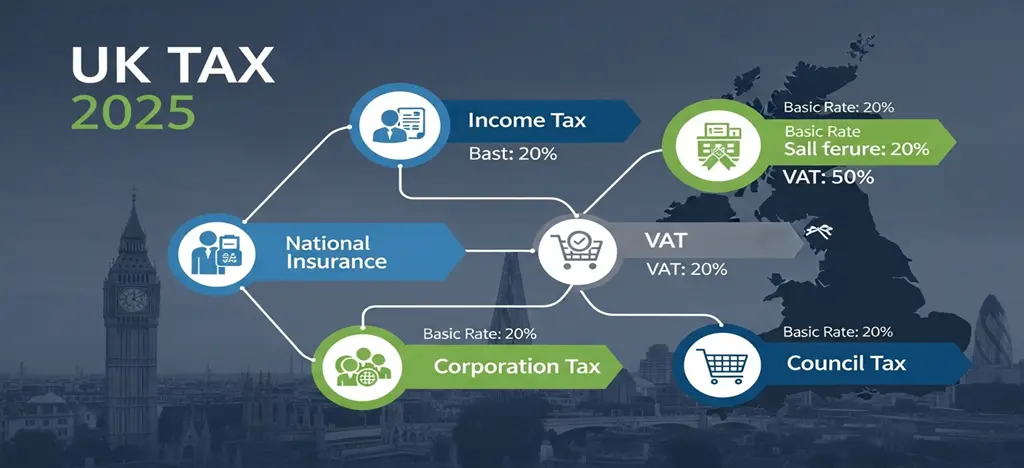Education is often hailed as the great equalizer, a powerful tool that can lift individuals out of poverty and pave the way for a brighter future. In the UK, a nation of over 68 million people, this promise holds immense potential, and ongoing efforts are helping millions of children, including those from disadvantaged backgrounds, access quality learning opportunities.
As of 2025, positive developments are evident: around 25.7% of pupils—nearly 2.2 million children—are now eligible for free school meals, reflecting expanded support for low-income families. This includes transitional protections ensuring continued access for eligible pupils.
Meanwhile, the attainment gap is being actively addressed, with disadvantaged pupils achieving an average Attainment 8 score of 34.6 at GCSE level, supported by targeted funding. This blog explores the current landscape of the UK education system for disadvantaged children in 2025, highlights supportive government and NGO initiatives, and looks ahead to exciting advancements planned for 2026 that promise even greater equity and opportunity.
The Current Landscape: Building Foundations for Disadvantaged Children in 2025
The UK education system continues to prioritize support for children from low-income households, with child poverty affecting around 4.5 million children (31% of all children after housing costs). These families often face additional challenges like high living costs, but initiatives are in place to ensure access to essential resources. For instance, in regions like the West Midlands and London, where poverty rates reach 36% and 35%, schools provide tailored assistance to help children thrive.
State schools serving these communities benefit from enhanced resources: improved libraries, dedicated teacher support (with pupil-teacher ratios around 1:20 in primaries), and increasing tech integration. Early interventions are key—57% of free school meal-eligible children meet early learning goals, up from previous years, thanks to focused programs. Ethnicity and gender considerations ensure inclusive approaches, with Black and Asian children benefiting from targeted ethnic minority achievement grants.
Post-pandemic recovery has seen attendance rates improve, with only 20% of disadvantaged pupils missing more than 10% of sessions, aided by family engagement strategies. The digital divide is narrowing through device loans and broadband subsidies, enabling more children to participate in blended learning. Curricula now emphasize holistic development, including mental health resources to support well-being amid economic pressures.
The outcome? Steady progress. More disadvantaged children are entering higher education, breaking cycles of limited opportunity. With near-95% enrollment rates, the system is fostering resilience and growth for all. Heading into 2026, projections suggest continued gains, potentially lifting 400,000 more children from poverty through sustained investments, aligning with SDG 4 goals.
Government Initiatives: Delivering Support in 2025
The UK has a range of programs designed to enhance opportunities for disadvantaged children, with strong implementation driving real results.
- Pupil Premium (PP): Provides £1,455 per disadvantaged primary pupil and £1,065 for secondary in 2025-26, totaling £2.9 billion. This funding supports personalized interventions, helping 44% of Year 6 disadvantaged pupils meet reading, writing, and maths standards.
- Free School Meals (FSM): Available to 2.2 million children, with breakfast clubs in 750 primaries improving attendance and focus. Transitional protections ensure continuity until 2026.
- Early Years Entitlements: 30 hours of free childcare for working parents from 9 months, plus a 45% uplift to Early Years Pupil Premium (£1/hour, up to £570/child). This reaches 74% of eligible children, boosting school readiness.
- High Needs Funding: £10.1 billion for SEND in 2025-26 (up 5%), including £938/child via the Disability Access Fund, supporting timely interventions.
- National Funding Formula (NFF): Distributes £2.3 billion extra for equity, with deprived schools receiving enhanced per-pupil support.
These efforts have increased enrollment and narrowed gaps—disadvantaged pupils are now only 3x less likely (down from higher disparities) to attend top universities. In 2025, the Child Poverty Taskforce’s strategy has enrolled thousands more, with regions like London leading in outcomes.
NGOs Filling the Gaps: Real Impact on the Ground
Where additional support is needed, NGOs bring fresh ideas and dedication, and a standout example is Narayan Seva Sansthan UK, the UK arm of India’s leading charity that has empowered 1.5 million lives since 1985. Registered in London since 2012, it raises funds and awareness to support disadvantaged and differently-abled children through education, providing grants up to £25,000 for literacy, skill-building, and enrichment projects in high-poverty areas like London and the Midlands.
It funds digital learning platforms and vocational training for 500+ UK-based underprivileged youth, with 2026 plans to introduce AI-enhanced tutoring and scholarships aligned with the Lifelong Learning Entitlement—building confidence, closing gaps, and preparing children for brighter futures.
The Path Ahead: Advancements for 2025 – And Exciting Developments in 2026
It is strengthening foundations: enhancing PP accountability, expanding FSM access, and investing in digital tools via NFF. Teacher incentives (£500 million) boost retention in deprived areas, while awareness campaigns promote entitlements. Public-NGO partnerships, like SHINE’s expansions, amplify reach.
The Children’s Wellbeing and Schools Bill drives holistic progress, mandating QTS for academy teachers from September 2026 and curriculum consistency. The Spring 2025 Child Poverty Strategy targets 50,000 fewer children in poverty by scrapping the two-child benefit cap.
For 2026, the Spending Review commits £2.6 billion for school places and £370 million for nurseries (100,000+ spots in deprived areas). Universal FSM for Universal Credit households rolls out, with £300 million uplifting FE funding (3.78% to £5,026/student). The Lifelong Learning Entitlement launches in January 2027 (pilots in 2026), offering flexible modules. Tuition fees rise modestly to £9,535, with foundation years at £5,760 for accessibility. Vocational funding continues till summer 2026, potentially narrowing gaps by 15% and supporting economic growth.
Final Word: Every Child Deserves a Bright Future
The UK’s education system is steadily advancing opportunities for disadvantaged children through dedicated support and innovation. 2025 brings expanded access and improved outcomes, while 2026’s reforms—from universal FSM to lifelong learning—promise transformative equity.
An educated child today builds a stronger UK tomorrow. Engage with initiatives like Narayan Seva Sansthan UK—donate, volunteer, advocate. The momentum is building.








